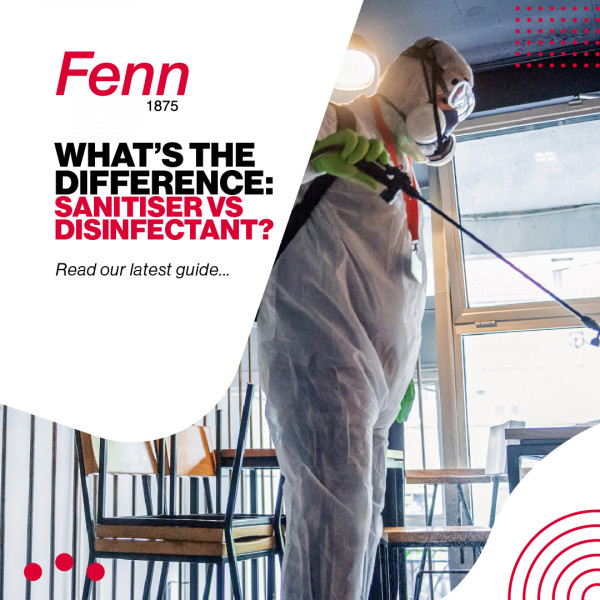With so much jargon and conflicting advice, it’s difficult to know the best way to keep your workspace clean. Having an understanding of the buzzwords and knowing the difference between terms that are used interchangeably is important. Especially when it comes to meeting safety requirements and knowing what products you need to use.
Simple misunderstandings between commonly used terms can be the difference between using the right product for your goal and environment. So here’s what you need to know…
Sanitisation
This is defined as “reducing or eliminating pathogenic agents on the surface of something”. In the case of cleaning products, sanitisers are designed to reduce bacteria on a surface by at least 99.9% within 30 seconds.
Disinfectant
Defined as “cleaning something, usually with chemicals, to destroy bacteria”. With regard to cleaning products this means disinfectants are designed to kill a wider range of microorganisms than sanitisers.
Effectively, disinfectant is a step up above the sanitisation process and is much more powerful.
When should I sanitise?
Sanitisation is necessary in high use environments and shared spaces - especially like the office if employees eat at their desk. It helps to reduce germs and bacteria but products should not make antiviral claims as they do not kill.
When should I disinfect?
Disinfection is more for frequently touched surfaces that can be a breeding ground for germs, bacteria and viruses. Think of this like the canteen area or toilets as disinfectant aims to kill the microscopic organisms which could affect your health.
Can I just disinfect everything?
Simple answer is no - ideally you should use this method:
First clean - reduce all surface area dirt so that you have an easier time removing germs.
Next sanitise or disinfect as required. It’s also important to note that even spaces that only require a surface clean will still need to be disinfected periodically to maintain a healthy workspace.
99.9% - that’s enough to be safe?
Actually, 99.9% isn’t what it’s cracked up to be! While it’s enough for some tasks, bacteria spreads at a much more rapid rate so leaving that 0.1% may still be enough to wreak havoc on your hygiene efforts… This is where log kill reduction comes into play!
As the amount of bacteria in a space can be very large, scientists have created a mathematical function called the logarithm to help with explaining bacteria reduction. When we are using disinfectants, the purpose is to kill microbes such as bacteria and viruses on surfaces. So for a product to be deemed suitable, we need to measure the level of kill.
So then, while 99.9% kill rate sounds successful, if your starting number is 1,000,000 bacteria, you’d still be left with 1000 bacterias after disinfecting. If you use 99.999% kill rate disinfectant, that’s leaving only 10 bacterias.
It’s therefore essential to note that most official disinfectant tests require a 4 or 5 log reduction in numbers to pass the test. A 5 log (99.999%) reduction is considered the gold star in terms of reducing the possibility of human disease transmission as far as possible.
For help with keeping your workspace clean and safe, contact us at This email address is being protected from spambots. You need JavaScript enabled to view it.
